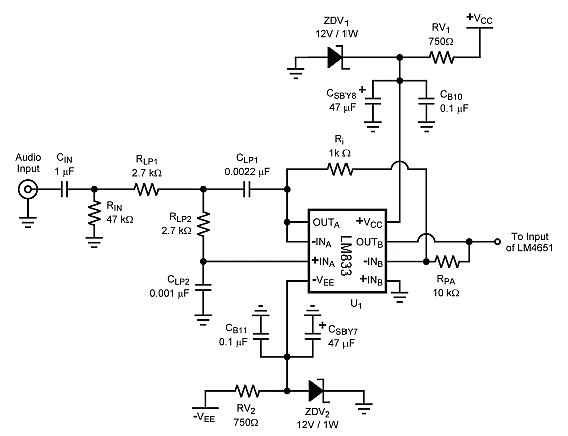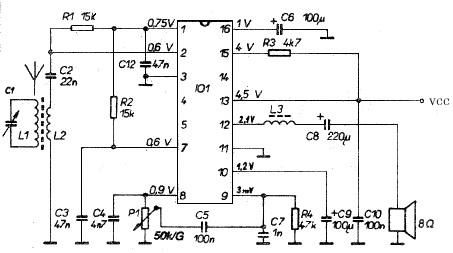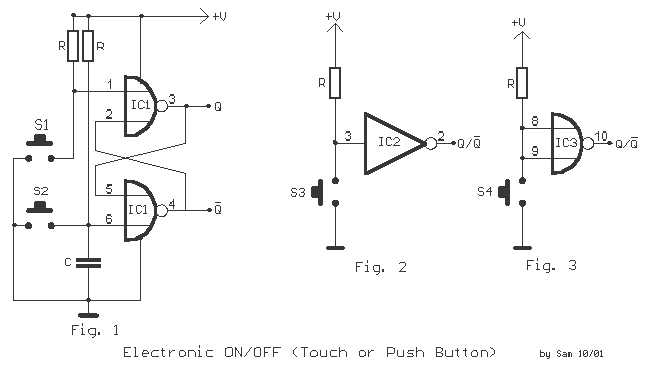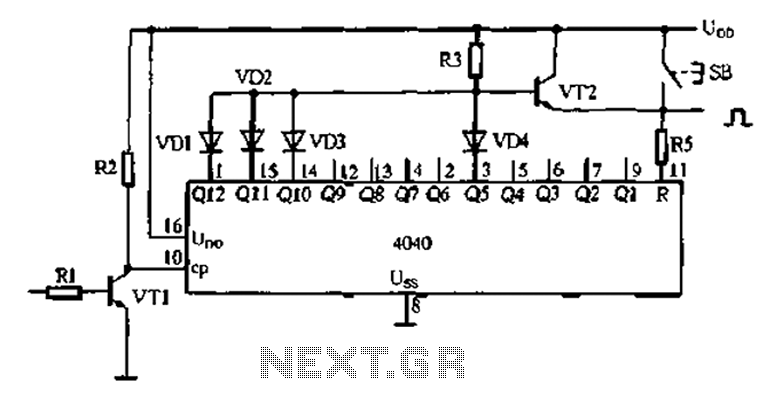
Electronic theremin

This circuit utilizes a CMOS integrated circuit to perform dual functions. The first two inverters serve as a digital audio oscillator, while the third inverter functions as a low-gain linear audio amplifier. The frequency of the oscillator increases with the intensity of light incident on photoresistor LDR1, and the illumination on photoresistor LDR2 controls the volume level of the loudspeaker. Increased illumination results in higher volume output. By waving hands between the two photocells and a light source, a unique type of electronic music is generated.
This circuit design leverages the properties of complementary metal-oxide-semiconductor (CMOS) technology, which is known for its low power consumption and high noise immunity. The first two inverters are configured to form an oscillator circuit, where the frequency of oscillation is directly influenced by the resistance of LDR1. As ambient light levels increase, the resistance of the photoresistor decreases, leading to a higher frequency output from the oscillator. This frequency modulation creates a range of tones that can be perceived as musical notes.
The third inverter acts as a low-gain linear amplifier, amplifying the audio signal generated by the oscillator. The volume control is achieved through LDR2, which similarly responds to light intensity. As the light intensity increases, the resistance of LDR2 decreases, allowing more audio signal to pass through to the loudspeaker, thus increasing the output volume.
The interaction between the two photoresistors creates an engaging audio experience. When hands are waved between the photocells and a light source, the rapid changes in light intensity alter both the frequency and volume of the sound produced, resulting in a dynamic and responsive electronic music performance. This circuit exemplifies the creative potential of using light sensors in audio applications, making it suitable for educational purposes, art installations, or interactive exhibits.This circuit has the CMOS IC doing double-duty performance. The first two inverters operate as a digital audio oscillator; the third operates as a low-gain linear audio amplifier. As the intensity of the light falling on photoresistor LDRl increases the oscillator's frequency increases; similarly, the illumination falling on photoresistor LDR2 determines the volume level from the loudspeaker:
The more illumination the more volume. If you flop and wave your hands between the two photocells and a light source, a special kind of electronic music will be produced.
This circuit design leverages the properties of complementary metal-oxide-semiconductor (CMOS) technology, which is known for its low power consumption and high noise immunity. The first two inverters are configured to form an oscillator circuit, where the frequency of oscillation is directly influenced by the resistance of LDR1. As ambient light levels increase, the resistance of the photoresistor decreases, leading to a higher frequency output from the oscillator. This frequency modulation creates a range of tones that can be perceived as musical notes.
The third inverter acts as a low-gain linear amplifier, amplifying the audio signal generated by the oscillator. The volume control is achieved through LDR2, which similarly responds to light intensity. As the light intensity increases, the resistance of LDR2 decreases, allowing more audio signal to pass through to the loudspeaker, thus increasing the output volume.
The interaction between the two photoresistors creates an engaging audio experience. When hands are waved between the photocells and a light source, the rapid changes in light intensity alter both the frequency and volume of the sound produced, resulting in a dynamic and responsive electronic music performance. This circuit exemplifies the creative potential of using light sensors in audio applications, making it suitable for educational purposes, art installations, or interactive exhibits.This circuit has the CMOS IC doing double-duty performance. The first two inverters operate as a digital audio oscillator; the third operates as a low-gain linear audio amplifier. As the intensity of the light falling on photoresistor LDRl increases the oscillator's frequency increases; similarly, the illumination falling on photoresistor LDR2 determines the volume level from the loudspeaker:
The more illumination the more volume. If you flop and wave your hands between the two photocells and a light source, a special kind of electronic music will be produced.





